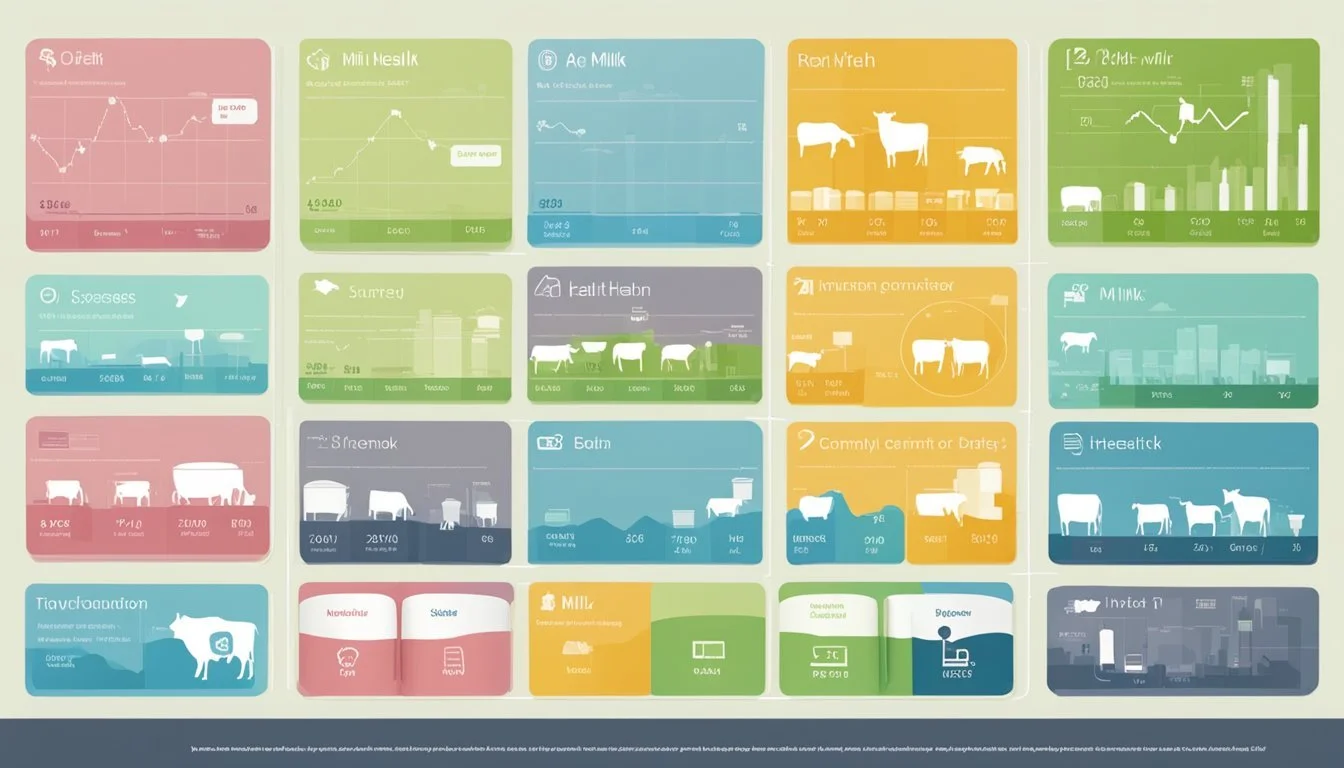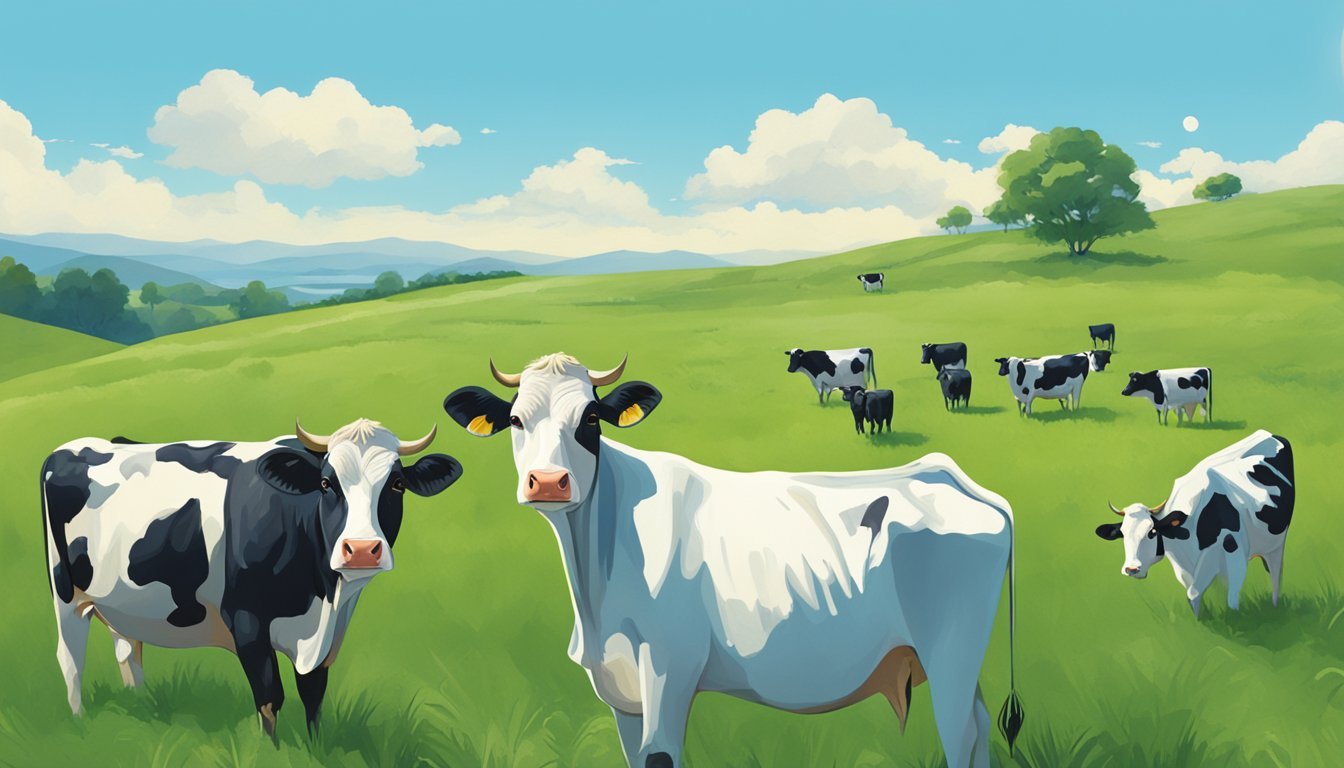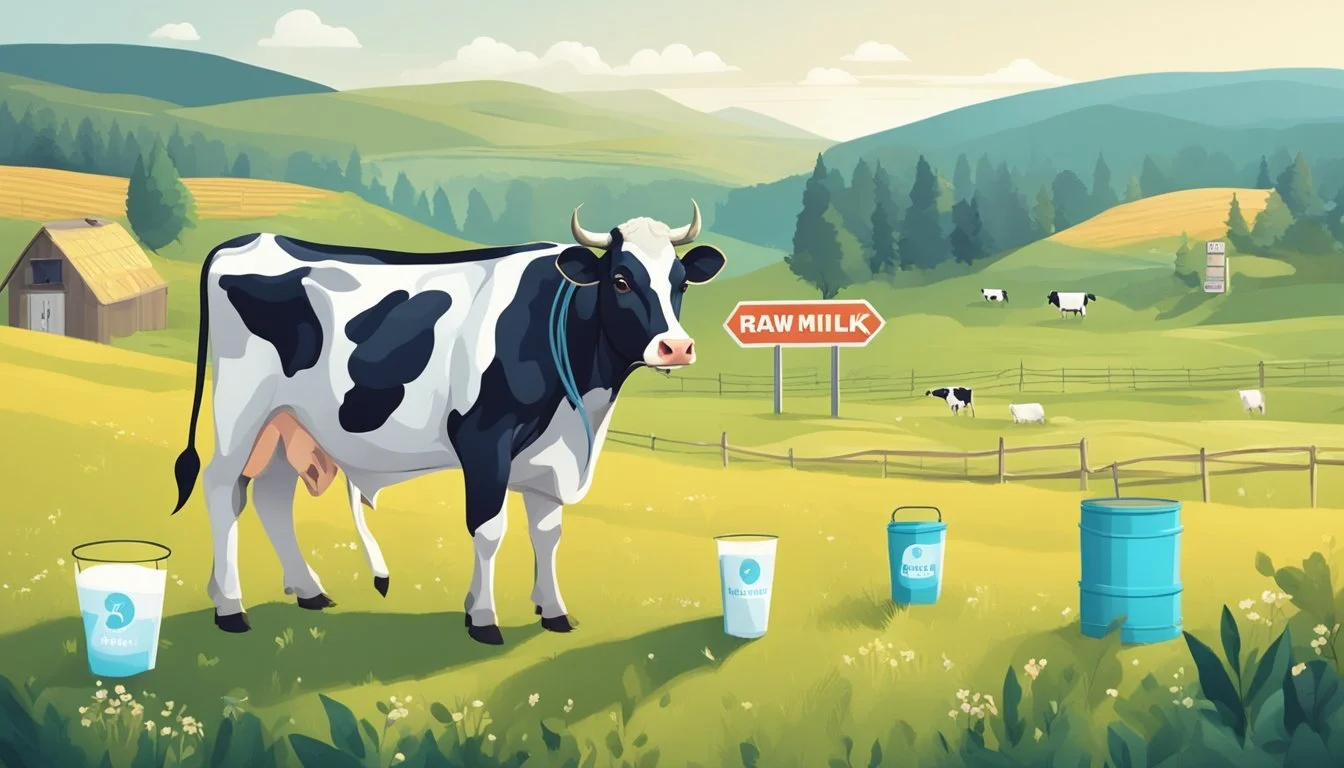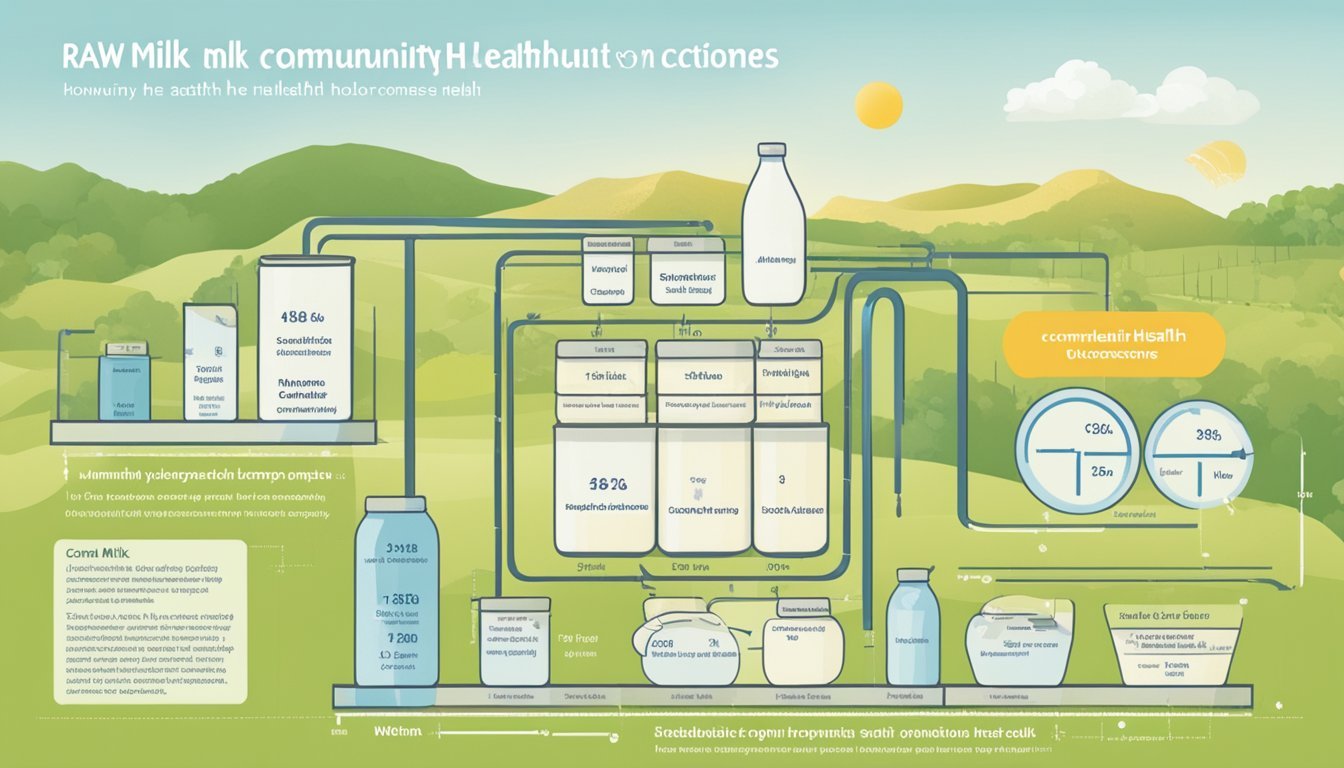The Impact of Raw Milk on Community Health
Statistical Insights and Implications
The consumption of raw milk, which is milk that has not been pasteurized to kill harmful bacteria, poses distinct challenges for public health. While some consumers advocate for the taste and purported health benefits of raw milk, the potential risks associated with its consumption are significant. Public health organizations, including the Centers for Disease Control and Prevention (CDC) and the Food and Drug Administration (FDA), warn against the consumption of raw milk due to the risk of contracting milkborne illnesses.
Statistics from the United States between 1993 and 2006 highlight that a substantial percentage of dairy product outbreaks were linked to raw milk products, suggesting an association between raw milk consumption and foodborne illness outbreaks. Despite these concerns, some states have moved to legalize the sale of raw milk, paralleling its increasing popularity. However, this legal shift has corresponded with an uptick in reported outbreaks, indicating a tangible public health risk.
The populations most vulnerable to severe illness from raw milk include children under five, adults over 65, and individuals with weakened immune systems. These sensitive groups face higher hospitalization and complication rates when exposed to pathogens commonly found in raw milk, such as Listeria, E. coli, and Salmonella. As the debate between consumer choice and public health safety continues, raw milk remains a contentious topic within communities, underpinning the need for ongoing research and clear communication about its impacts on health.
The impact of raw milk on community health goes beyond its nutritional value, extending to the potential benefits it offers when used for making raw milk butter. The process of making raw milk butter allows communities to enjoy a wholesome and natural product that retains the inherent creamy texture and nutritional properties of raw milk. This ties into the broader context of the raw milk delivery revival, which has facilitated greater access to this unprocessed dairy product despite the challenges posed by the raw milk legal landscape.
A raw milk farmer interview can provide valuable insights into the production of raw milk and its transformation into butter, shedding light on the dedication and care that goes into creating this community-sustaining resource. Furthermore, the potential for raw milk to contribute to reduced allergies adds another layer to its positive impact on community health, offering a natural and unprocessed alternative that resonates with individuals seeking wholesome food options.
By incorporating raw milk into the production of butter, communities can not only enjoy a delicious and nutritious staple but also foster a greater appreciation for locally sourced, farm-fresh products, ultimately contributing to the overall well-being and health of the community.
Overview of Raw and Pasteurized Milk
In assessing the impact of milk consumption on community health, it is crucial to understand the differences between raw and pasteurized milk. These differences are pivotal in discussing health-related outcomes.
Historical Background
Historically, raw milk was the norm, with individuals consuming milk directly from the dairy animal. However, as cities grew and the distance between consumers and farms increased, milk began to spoil during transport. This led to the innovation of pasteurization in the late 19th century, a process named after the French scientist Louis Pasteur. Pasteurization became widely adopted as a means to extend milk's shelf life and improve its safety.
Raw Milk Definition
Raw milk refers to milk from cows, goats, sheep, or other animals that has not been pasteurized to kill harmful bacteria. This milk may contain a variety of microorganisms, some of which can pose health risks, especially to the young, elderly, pregnant, or those with a weakened immune system.
Pasteurized Milk Definition
Pasteurized milk, in contrast, is milk that has undergone pasteurization, a process where milk is heated to a specific temperature for a set period. This is sufficient to inactivate harmful pathogens commonly found in raw milk, thereby reducing the risk of foodborne illness. Pasteurized milk maintains this level of safety throughout its shelf life, as long as it is properly refrigerated and handled.
Nutritional Profile of Raw Milk
Raw milk is a natural source of numerous nutrients that are essential to human health, including vitamins, minerals, and proteins. This section provides an in-depth look at these components.
Vitamin Content
Raw milk contains a range of vitamins that contribute to its nutritional value. Vitamin A is prevalent in raw milk, providing benefits for vision and immune function. It also contains vitamin D, which is crucial for calcium absorption and bone health. Other B-vitamins, such as vitamin B2 (riboflavin), are present, aiding in energy metabolism. Folate, another essential B-vitamin, supports cell division and the formation of DNA. Although the pasteurization process can affect the concentration of certain vitamins, raw milk inherently has a rich vitamin profile.
Mineral Content
Raw milk is known for its high calcium content, essential for bone health and muscular function. It also supplies a good amount of magnesium, which is vital for numerous biochemical reactions in the body. Both minerals are found in quantities that contribute to daily dietary needs. Minerals are retained more consistently in raw milk compared to heat-treated milk, where some mineral content can be reduced through processing.
Protein Quality
The proteins found in raw milk, such as whey proteins and caseins, are complete proteins, meaning they contain all the essential amino acids required by the human body. Whey proteins are highly digestible and feature a range of bioactive peptides known for supporting immune function and muscle development. Raw milk also provides a balance of essential fatty acids, contributing to its protein quality and offering additional health benefits like promoting heart health.
The Role of Dairy in Diet and Nutrition
Dairy products play a multifaceted role in diet and nutrition, providing essential nutrients but also posing challenges when not consumed in moderation.
General Dairy Consumption
Dairy products, such as milk, cheese, and yogurt, are integral to many people's diets worldwide. They are valued for their rich content of essential nutrients, including calcium, vitamin D, phosphorus, potassium, and high-quality proteins that are crucial for bone health and maintaining various bodily functions. Notably, the protein in dairy contains all essential amino acids required by the human body and is highly digestible, making it an important dietary component for people of all ages.
Dairy consumption patterns vary globally, with individuals in some countries consuming dairy daily, while others have lower consumption rates. The type of dairy consumed also varies, with options ranging from full-fat to fat-free milk. The use of fat-free milk is encouraged to reduce intake of saturated fats while still benefiting from the nutritional profile of dairy.
Dietary Guidelines and Servings
Dietary guidelines suggest the inclusion of dairy in daily eating patterns while advocating for fat-free or low-fat options as preferable choices. These guidelines typically advise the following number of servings per day, depending on age and nutritional needs:
Children (ages 2-3): 2 servings
Children (ages 4-8): 2.5 servings
Teens and adults: 3 servings
Each serving size can be roughly equated to:
Milk: 1 cup (8 ounces)
Yogurt: 1 cup
Cheese: 1.5 ounces of natural cheese
Inculcating dairy into dietary planning involves balancing nutrient intake with energy needs. Ensuring individuals receive adequate portions contributes to health and nutritional well-being while preventing overconsumption, which could lead to potential health concerns.
Health Benefits of Raw Milk
Consumption of raw milk has been associated with a range of health benefits, shaped by its content of natural probiotics, immunoglobulins, and various nutrients. The following subsections detail the specific advantages tied to raw milk in relation to gut health, allergic responses, and disease prevention.
Probiotic Effects and Gut Health
Raw milk contains live probiotics, beneficial bacteria that can support the gastrointestinal system. These probiotics contribute to a balanced gut microbiome, aiding in digestion and potentially reducing the incidence of gastrointestinal disorders.
Allergies and Immune Response
Clinical evidence points to raw milk consumption being linked with reduced rates of allergies, asthma, and atopy. The presence of immune-modulating components in raw milk may play a role in this protective effect, helping to decrease hypersensitivity reactions.
Diseases Prevention
Studies have explored the connection between raw milk and lower risks of certain diseases. Some findings suggest that those who consume raw milk may have a reduced risk of cardiovascular disease, stroke, and hypertension. Although not definitive, there is also a discussion about the potential for raw milk to influence the rates of colorectal cancer, metabolic syndrome, obesity, osteoporosis, prostate cancer, and acne. However, more extensive research is required to confirm these associations.
Potential Risks Associated with Raw Milk Consumption
Raw milk, while consumed by a portion of the population for its perceived benefits, presents various health risks that are well-documented in scientific literature. This section examines these risks in detail.
Pathogen Contamination
Raw milk can harbor a range of dangerous pathogens due to its unpasteurized nature. Campylobacter jejuni, Listeria monocytogenes, Salmonella, and Escherichia coli are among the common bacteria found in contaminated milk. These pathogens can cause severe foodborne illnesses and are a public health concern.
Foodborne Illnesses
The consumption of raw milk is a significant source of foodborne illnesses. Studies have documented that individuals consuming unpasteurized milk have a heightened risk of infection from various bacteria. Foodborne illnesses can lead to symptoms ranging from mild gastrointestinal distress to life-threatening conditions requiring hospitalization.
Outbreak Data Review
A review of outbreak data reveals that raw milk is a recurring factor in foodborne illness outbreaks. Campylobacter spp., responsible for most milkborne illnesses, alongside E. coli and Listeria, have been implicated in numerous cases. These outbreaks highlight the risks associated with raw milk consumption.
Risks to Specific Populations
Some populations are particularly vulnerable to the risks posed by raw milk. This includes infants, the elderly, pregnant women, and individuals with weakened immune systems. For these groups, the risk of severe illness and complications from pathogen exposure in raw milk is significantly heightened.
In conclusion, while some consumers opt for raw milk, the potential health risks, particularly the threat of foodborne illnesses due to pathogen contamination, cannot be overlooked. Public health organizations continue to advise against the consumption of unpasteurized milk, especially among those at increased risk of infection and serious health outcomes.
Statistical Data and Health Outcomes
Numerous studies have evaluated the impact of raw milk on community health, providing extensive statistical data related to its consumption. Health outcomes associated with raw milk are complex and backed up by various scientific methodologies.
Epidemiological Studies
Epidemiological data gathered through observational studies and meta-analyses suggest that raw milk consumption may confer some health benefits, such as improvements in immune health and a reduction in allergy prevalence. For instance, it has been documented that regular consumption of raw milk could improve bowel and mood scores, particularly in individuals previously in poor health. However, the protective effects revealed show heterogeneity across populations and are dependent on factors such as age and genetic predisposition.
Health-related outcomes: Improved immune response, better mood and bowel function
Meta-analysis: Documents benefits and harms, with a tendency towards positive health-related outcomes
Case Reports and Clinical Trials
On the other hand, case reports highlight the risks associated with raw milk, including a higher incidence of foodborne illness due to pathogens. Clinical trials underscore these risks, drawing a link between unpasteurized milk and various adverse health effects.
Foodborne illness outbreaks: Strongly associated with raw milk
Clinical evidence: Indicates potential for serious health risks including hospitalizations
Miscarriage: Some studies suggest a possible association with raw milk consumption due to the presence of harmful bacteria
Clinical evidence stresses the importance of understanding potential risks, and while some populations report positive outcomes, others may be at greater risk for adverse health effects.
Public Health Interventions and Regulations
Public health interventions and regulations play a crucial role in minimizing health risks associated with raw milk. They are designed to uphold safety, manage potential hazards, and educate consumers while supporting the dairy industry's ability to supply safe products.
Pasteurization Laws
State and federal laws mandate pasteurization of milk to prevent foodborne illnesses. Pasteurization effectively destroys harmful microorganisms in milk through heat treatment. The Centers for Disease Control and Prevention (CDC) reports a significant decrease in milk-related sickness since such laws were implemented.
Testing and Quality Control
Regular testing and quality control are essential components of dairy production regulations to ensure milk safety. Dairy farms must frequently test raw milk for pathogens, somatic cell counts, and antibiotic residues as per state laws. These interventions help detect and mitigate food safety hazards before reaching the consumer.
Health Advice and Consumer Education
Public health officials provide health advice to educate consumers on the potential risks of consuming raw milk. Through brochures, websites, and public campaigns, they emphasize the importance of pasteurization for safety. Consumer education is aimed at reducing the demand for potentially hazardous raw milk.
Dairy Farm Management
Effective dairy farm management practices are regulated to maintain milk safety. This includes hygiene protocols, proper handling, and storage of milk, as well as regular inspection of dairy farms. Such measures are crucial to prevent contamination and ensure that the dairy products meet safety standards.
These interventions and regulations are designed to safeguard public health while respecting the choices of consumers and the operations of dairy producers.
The Societal Impact of Milk Production and Consumption
Milk production and consumption have multifaceted implications for society, ranging from economic benefits to environmental concerns, ones that hold varying significance across different regions of the world.
Economic Factors
Dairy products play a vital role in the livelihoods of many, contributing to the economies at local, regional, and national levels. In high-income countries like the United States of America and Canada, the dairy industry supports thousands of jobs and generates substantial revenue. On the other hand, in developing countries, dairy serves as a critical source of income for smaller-scale farmers, enhancing their economic stability. Milk consumption fuels this industry, sustaining not only the producers but also those involved in processing and distribution.
Cultural and Environmental Considerations
The production of dairy holds significant cultural importance in various societies, providing essential nutrients and forming part of traditional diets. However, it also raises environmental concerns, as the global dairy sector is associated with greenhouse gas emissions that contribute to climate change. These environmental impacts necessitate a balanced approach to dairy consumption and production that respects cultural preferences while mitigating adverse effects on the environment.
Global Dairy Market and Nutrition Programs
The availability of dairy products is critical in addressing nutritional deficiencies worldwide, recognized by organizations like the World Health Organization. Programs aimed at increasing milk consumption can lead to improved health outcomes, especially among children in developing countries. The global dairy market, therefore, has a substantial role in nutrition programs aimed at fostering better health through the provision of high-quality proteins and nutrients such as calcium.
Conclusion
The debate surrounding raw milk's impact on community health is driven by a balance of risks and benefits. Raw milk enthusiasts often advocate for its nutritional benefits and potential role in reducing allergies and respiratory infections. Nevertheless, public health records show that raw milk is implicated in many foodborne illness outbreaks, with serious health repercussions.
Public Health Concerns:
Foodborne Illnesses: Public health data indicates that raw milk is a significant source of pathogens leading to illness.
Hospitalizations: There have been notable hospitalizations related to the consumption of unpasteurized milk products.
Nutritional Considerations:
Potential Benefits: Some studies suggest that raw milk may confer health advantages, such as a reduced risk of certain immune-related conditions.
Essential Nutrients: Milk is recognized for its array of essential nutrients vital for human health.
It is crucial to consider that the benefits associated with milk consumption vary depending on its pasteurization status. Public health organizations caution against raw milk consumption due to the risks of milkborne illnesses. The statistics strongly suggest that while raw milk might have certain health advantages under strict hygienic conditions, its consumption can pose severe health risks.
Individuals seeking the nutritional advantages of milk are advised to look for safely pasteurized products that retain nutritional value without posing the same health risks as raw milk. The community's health must be a priority, and any potential benefits of raw milk must be weighed against the documented risks.








